Media | Articles
Highs and lows of the Camaro, by generation
With the Camaro nameplate retiring soon, we’re honoring the beloved two-door with a series of love letters, fun lists, and memories. Many performance cars, especially nowadays, aim for an anodyne version of perfection that only a few can afford. The Camaro is for the rest of us—and it’s always ready to party. Still, we can’t pretend the car we’re about to celebrate over the next week or so is perfect. That in mind, let down your hair and come with us for a deep dive into what, exactly, makes the Camaro so bitchin’. Here: the highs and lows from each of the Camaro’s six generations.
With so many memorable models and so many race-winning performances, it’s difficult to pick just one highlight from each generation of Camaro. Of course, we like to challenge ourselves, so we did exactly that, polling our staff to choose one high and one low from each of the six generations of our favorite Detroit underdog.
We welcome your input as fellow Camaro lovers: What triumphs or notable features did we neglect? Were there any issues that Chevrolet should have caught in development but didn’t? Share your thoughts with us in the comments below.
First Generation (1967–69)

High: 1969 Trans-Am–winning Chevrolet Camaro.
AMC and the Big Three put a lot of effort into Trans Am racing in the late ’60s and early ’70s. Notable drivers included Parnelli Jones, Dan Gurney, George Follmer, Jerry Titus, and Mark Donohue. With Roger Penske as his crew chief, Donohue won back-to-back Trans Am championships for Chevrolet in 1968 and 1969 powered by the big-bore, short-stroke 302 V-8 from the Camaro Z/28 which ended production in 1969 and was replaced by the LT-1 the following year.
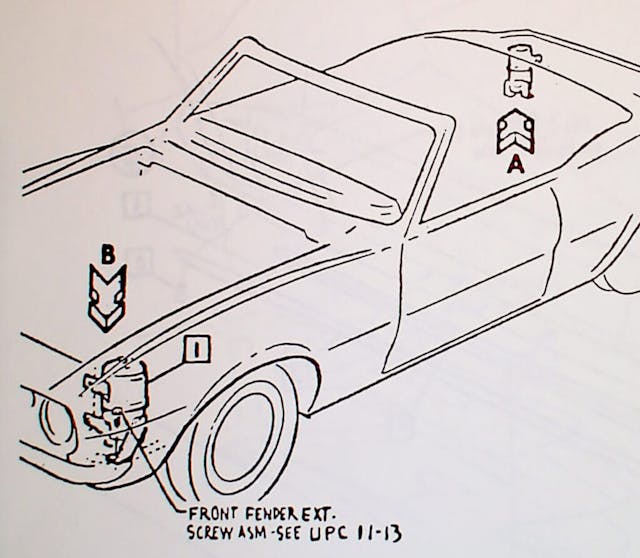
Low: “Cocktail shaker” dampers on the convertibles.
Removing the roof of the Camaro eliminated a lot of structure, introducing a lot of body flex. The solution was a set of four oil-filled canisters with a suspended weight tuned to absorb the specific frequency at which the body would vibrate. It’s not a particularly elegant solution, and the canisters added about 100 pounds to the Camaro.
Second Generation (1970–81)
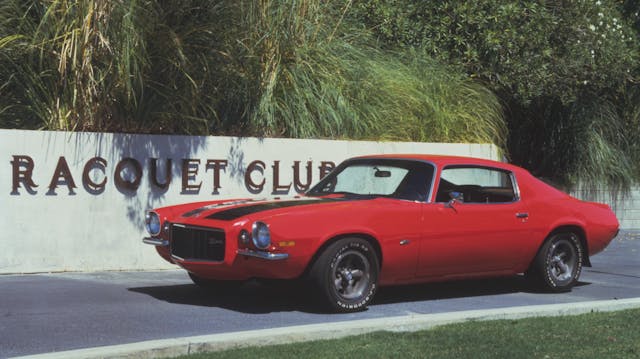
High: Pre-’74 Z/28 with all the right options.
There are plenty of ways to build a Camaro, and that degree of personalization is part of the draw of the pony car class. While there’s nothing wrong with a big-block, we’re fans of the Z/28 package, which brought a 350-cubic-inch LT-1 with a solid-lifter cam and a four-barrel carb along with upgrades to the suspension, already improved for the second-gen car. The RS package, shown here, with its redesigned fascia that included round marker lights and an extended grille framed by a split bumper, gave the Camaro a noticeably different look. If you also specced yours with a Hurst four-speed, mag wheels, and stripes—well, you might have the perfect second-gen, in our book.
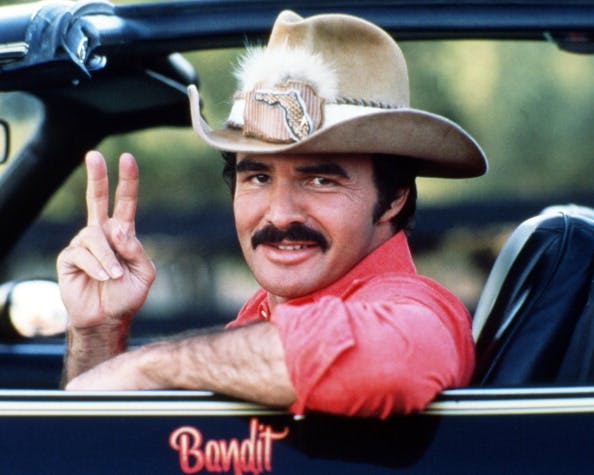
Low: This generation lived in the shadow of Burt Reynolds’ magnificent mustache and his Bandit Trans Am.
While the Camaro managed to survive the late ’70s with decent styling and sales numbers that eclipsed those of the Mustang (in 1977), the Firebird thrived, especially in Trans Am livery with its over-the-top graphics. A black and gold Trans Am, equipped with T-tops and dressed as a 1977 model, was almost as big a star as Reynolds in the film and has become synonymous with Smokey and The Bandit. Where was the Camaro movie love?
Third Generation (1982–92)
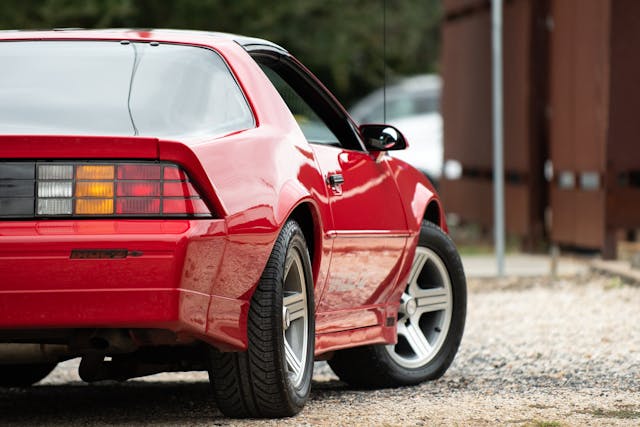
High: IROC with T-tops.
With its liftback cargo area, third-generation Camaro was downright practical, but where it really shone was the style. The IROC, with its signature 16-inch wheels and ground effects, was one of the best-looking pony cars of the ’80s and we think its looks have aged rather well. Starting in 1988, you could also option your IROC with the 1LE package, which added a close-ratio transmission and brakes improved with parts pirated from the Corvette and Caprice.
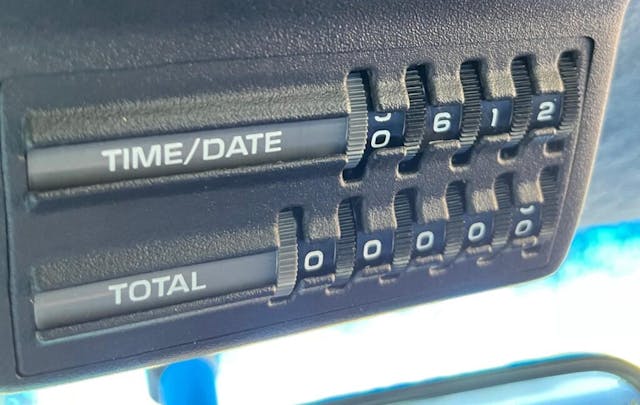
Low: The big engine came with only an auto. Also, someone kindly tell us what “Berlinetta” means, and why those cars had a datebook on the roof.
While they still look cool, the Tuned Port Injection (TPI) intakes were a bit of a strange choice for a sporty car, because their strength is low-end torque production. The 350 models produced an adequate 245 hp and an impressive 345 lb-ft of torque at the end of the third-gen’s run. The compact and lightweight T5 five-speed transmission, like the one used in contemporary Mustangs as well as in the 305-equipped Camaro, had a maximum torque capacity of 300 lb-ft and thus never found its way into the more powerful and torquey Camaros powered by the TPI 350.
Fourth Generation (1993–02)
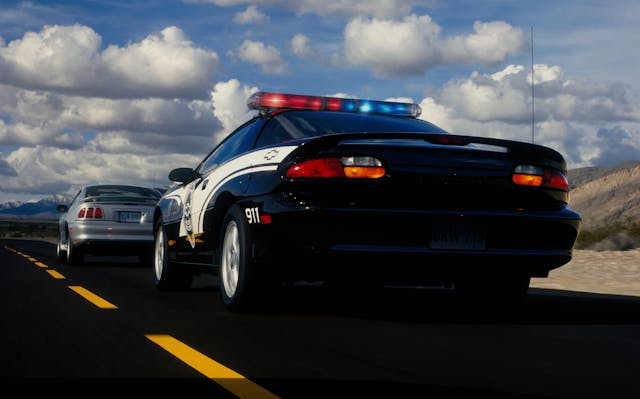
High: The B4C-package Camaros produced for police.
The B4C gave the Camaro all of the performance of the Z28 without a lot of the additional options, many of which tacked on extra weight. They were also missing T-tops which seem to be found on most of the high-performance Camaro models. While the Z28 came with a black roof and mirrors, the B4C was painted like a plain old base Camaro, so it was also a bit of a sleeper—provided it didn’t have lights on top or wear police livery.
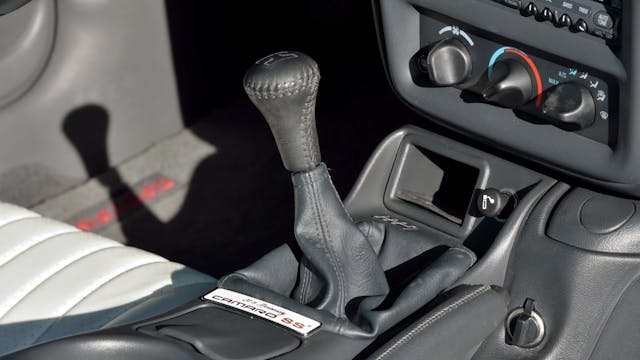
Low: “Skip shift. ”Also, the service procedure for replacing the rear spark plugs.
The tricky shift procedure could easily be worked around, but the long, steeply angled windshield meant that the engines are tucked way into the cowl on the fourth-gen Camaro. Working on the back of the engine is not going to be a simple task, but at least the plugs have a long service interval.
Fifth Generation (2010–15)

High: The LS7–powered Z/28.
“Imagine presenting to Chevrolet leadership that we wanted to sell a vehicle that had no carpet, no air conditioning, and a trunk that had one speaker just because the seatbelt chime was a requirement, and that we wanted to sell it for more than the Corvette costs. That was a personal win. And the thing was a track beast.”—Al Oppenheiser lead development engineer, fifth- and sixth-generation Camaro
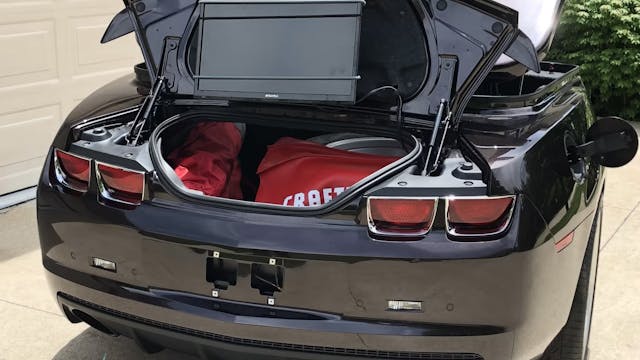
Low: Concept car trunk.
The fifth-gen Camaro returned with concept-car styling, and it was a big hit. However, like the sixth-gen that followed, this Camaro featured a rather average-sized trunk only accessible through a tiny opening. Packing can be a hassle, and large, rigid luggage is a no-go. Pack light, or pick a duffel bag.
Sixth Generation (2016–24)
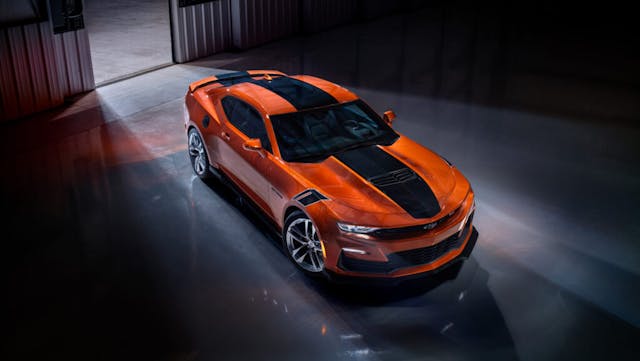
High: The SS 1LE.
The Alpha platform that underpins the 6th-gen Camaro is an absolute gem, with fantastic road manners and excellent handling and road feel. Chevrolet was nice enough to give us the 1LE package in turbo four, naturally aspirated V-6, naturally aspirated V-8, and supercharged V-8 varieties, so there’s a driver-focused 6th-gen for Camaro fans of every kind. Our favorite, of course, is the SS 1LE: It drives like a BMW M3 but looks, sounds, and hits the wallet like nothing but a Camaro.
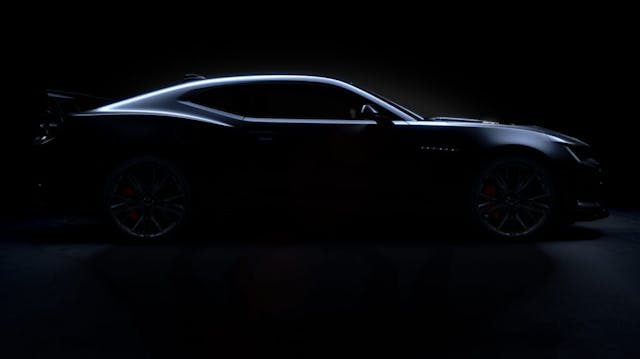
Low: Good luck seeing out of the thing.
Visibility in the sixth-generation Camaro isn’t any worse than it is in the fifth-generation, and it’s certainly no worse than many contemporary sports cars. That’s not to say it’s great. However, you get used to the sightlines. You can’t have a roof this low or a profile this sleek without some tradeoffs.
***
Marketplace
Buy and sell classics with confidence
Check out the Hagerty Media homepage so you don’t miss a single story, or better yet, bookmark it. To get our best stories delivered right to your inbox, subscribe to our newsletters.












I always liked the Z-28. But now I have a Porsche Cayman GTS4, and I love driving that car.
Why no mention of the 4th gen factory optioned SS sent to SLP engineering? It added some nice options like more hp, eibach suspension and lots of other great performance adders. The 4th gens were tire melting fun! I still have my Sunset Orange 01 SS packed full of performance goodies and will never sell it! Regret ever selling my 69. Miss the wheelstanding fun it provided. Also really love my ’13 ZL1. It loves eating Challengers.
I bought the 2000 SS in black 6 speed. Put on some bolt ons and 4.10s and had a blast. Some suspension work made a great all round fun car. 13.01 in the quarter. Could have been a lot faster with a better 1/4 driver I’m sure. 145 mph on an appropriate piece of road. Pulling hard steady as a big rock. Ran out of road. Sold it after 8 years because it got very uncomfortable for my old bones to drive.
I owned a 68 SS/RS 396. I was told the identical engine in 67 was rated at 425hp. Mine was rated at 375hp. Swapped the 396 for a built L88, which was rated at between 500 & 600hp coupled to a 4-speed and 3.73 gears. It was a beast that would pop wheelies on the street. Lots of fun to drive 55 years ago.
Chevy said Gen 5 was supposed to look similar to the 69. Not even close. The driver could actually see out the 69 rear window.
Owned 4 Firebirds, loved every one. Had nightmares when they discontinued the line. How could they stop making Firebirds and keep making Buicks? Test-drove a few Camaros–sorry, but like Mustangs, felt like I was in a tin can. Nevertheless, my heart goes out to Camaro lovers. I feel your pain.
Let’s not forget GM Motorsports / Players Challenge race cars that you could order from ’86 to ’92, that came complete with sealed blueprinted engines, special transmission, differential, steering, suspension, brakes, roll cage and open dual exhaust. You could even finance them through GMAC.
GM produced under 100 each year.
My first new car, after university graduation was a 1968 SS 396 Camaro . Teal blue with a white stripe around the front. It’s the best Camaro, because it was mine. Drawbacks include only a 3 speed manual and those frustrating Rallye wheels. Every time you got a wheel balanced you would hope the balance weights did not line up with the clips on the chrome wheel rim. If they did, you had to painstakingly move a clip or two
Then after Penske/Donohue won with a Camaro, they did it with the AMC Javelin, so was it the car?
uhhh…why are you bringing up jeeps and trucks when article is about Camaro’s? Ok..I am in your groove. Now I get it. I like Mounds bars they are good, oh wait, Almond Joys are pretty good too. Wait, are we supposed to be talking about Camaro’s?
Poor outward visibility in the 5th and 6th gen hurt sales – not just my opinion – it was unanimous. Three of my friends seriously considered getting Camaros, but bought new Mustangs and Challengers instead because that problem was worse in the Camaro. The door metal was too high. The side window glass was just too short. Can’t open the window on a nice day and rest your elbow on the door. The dash was so high and seat so low, the dash ended up at “nose” level. So forward visibility was lousy too. How do people autocross these cars? Camaro rear visibility only matched the competition. The C8 Z06 Corvette waiting lists are long, so while waiting I briefly seriously considered ordering a ZL1 Camaro last year. But I think the outward visibility would have made me regret it. Anyway, that’s 4 recent lost sales for Camaro – just in my circle of friends.
I’ve owned samples from Gen’s 1-5 and still have most of them (I sold off my ’84 Z28 a few years back to make space in the garage). A “high” that I didn’t see mentioned and perhaps that was due to the collector nature of the magazine focusing on stock vehicles, was that back in the day when I went to the auto prats store for that new aluminum manifold or a set of headers I’d been saving for, it was always cheaper for my Camaro’s than they were for my Ford. The Ford went bye-bye to make room for more Camaros. Another pro from generation to generation was that GM delivered better performance as the years went by (smog laden motors aside). Handling got better, braking got better and eventually so did the motors and transmissions. At times my ’69 convertible can be as scary to drive as my ’13 ZL1 for completely different reasons. The low for the 6th gen is twofold: a) I don’t have one and b) it’s the last one they say they’ll build (heard that before). Maybe it will come back as a ’30 all electric Tesla slayer. GM can look at the eMustang for what not to do.
Really surprised to see the Burt Trans Am as a low. Maybe to uppity college-type people, but in my small town everyone loved the black Trans Am and the movie. I remember talking about that car a lot as a kid. Plus, didn’t Pontiac keep the better motors longer into the 70s than everyone else for the Trans Am? I’d count my 76 as the low point of Camaro. Plastic trash interior, 165 hp V8 new (probably 120 by the time I got it). Odd choice on the second gen low point, in my opinion.
I think the point was that the Trans Am was so popular, it hurt Camaro sales. That would make it a low point for Camaro.
I am a Mustang guy but I appreciated the first gen Camaro styling. I think the split bumper look on the second gen was a great styling cue. But I never liked any of them enough to buy one. Now I could have been talked into buying a ’70 Cuda or Challenger and actually tried but could not get one built with the 440 late in the model year. That is how I wound up with the ’70 Mach1 that I still own and drive.
I loved my 1979 Berlinetta . It’s creature comforts like power windows were just what a 25 year old “ Mature “ guy need to impress the chicks. My wife of 43 years now recently told me she consented to a first date with me only because I had that car. I have a 1977 Camero LT with 58000 original miles now with crank windows and still love the styling.
My. First ‘real’ car was a ’78 TA Y82 (Bandit) I bought in ’80, so I am partial to Pontiacs and currently have a ’98 Formula WS6. But I have had several Gen 2’s, new and used, over the years. My favorite was an ’84 Z28 HO survivor I bought in the early 2010’s. What a blast to drive! I tried to love the Gen 5/6’s, test driving several, but as the article states, couldn’t get over the low roofline; it’s like looking through a gun turret…..
After I graduated high school in 67, my second “nice” car was a 68 red 396 SS Camaro I bought used from a good friend. Really loved that car. Unfortunately while stopped at a traffic light a woman tried to put a 65 Mustang in the trunk. Didn’t fit! Then I bought a new brown 74 Camaro LT. Like the color it was a real turd.